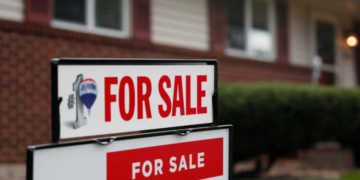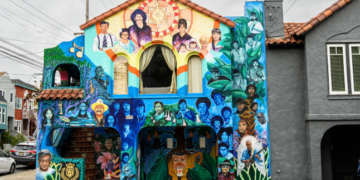Dec 3, 2024 Story by: Editor
The U.S. is grappling with significant challenges in advancing Black homeownership, as highlighted by the 2024 State of Housing in Black America (SHIBA) report, published by the National Association of Real Estate Brokers (NAREB) this month.
“The two best-performing demographics for African Americans — Black female-headed households and millennials — both declined in home sales in 2023,” the organization stated in announcing the report’s findings.
Black homeownership in 2023 stood at just 45.7%, a stark contrast to the 74.3% rate for white households. The highest rate of Black homeownership, 49%, was recorded in 2004, underscoring a sharp decline over the past two decades.
“We are in a state of emergency with Black homeownership,” declared NAREB President Courtney Johnson Rose. She noted that progress has been minimal, with the rate remaining stagnant or declining even before the challenges of the past two years. “The SHIBA report underscores that there has been little progress in increasing Black homeownership,” Rose added.
Rose expressed particular concern over the drop in mortgage applications and approvals among Black millennials, a demographic critical to building generational wealth. “When [millennials] slow their home purchases, it curtails opportunities for intergenerational wealth,” she emphasized. “Their success determines the aggregate potential for future Black homeownership increases.”
The report also spotlighted the systemic obstacles facing Black homebuyers, including higher denial rates and disproportionate access to high-cost loans. Black mortgage applicants faced denial rates of 17%, more than double the 7% rate for white applicants. Additionally, properties in Black neighborhoods often received lower appraisals compared to similar homes in predominantly white areas, further hampering Black homeownership.
The report highlighted that a robust Black labor market presence has not translated into increased homeownership or reduced wealth disparities. Lower-income applicants, regardless of race, faced higher interest rates, with NAREB calling for urgent reforms to address inequities in the housing finance system.
A significant decline in mortgage applications was observed across all racial and ethnic groups in 2023, with Black applicants particularly affected. NAREB noted a 24% decrease in applications from Black women between 2022 and 2023, reversing a steady upward trend since the Great Recession. “Until 2021, there had been a steady rise in the number of applications from Black women,” the report stated. “By 2023, applications submitted by Black women decreased by 24% from 2022.”
These findings underscore the pressing need for systemic reforms to support Black homeownership and address long-standing racial disparities in the housing market. Source: AHA















